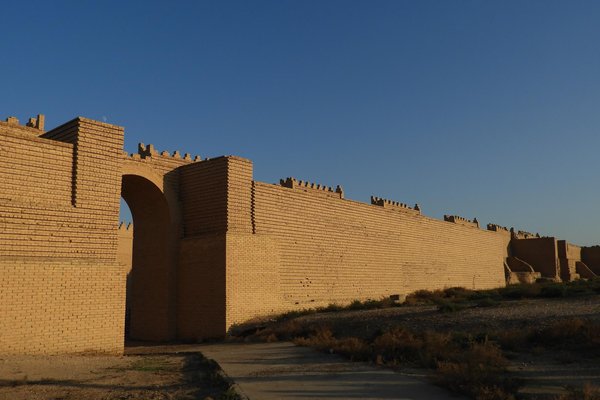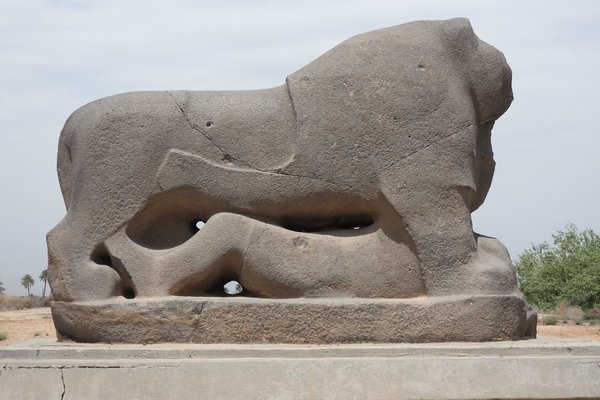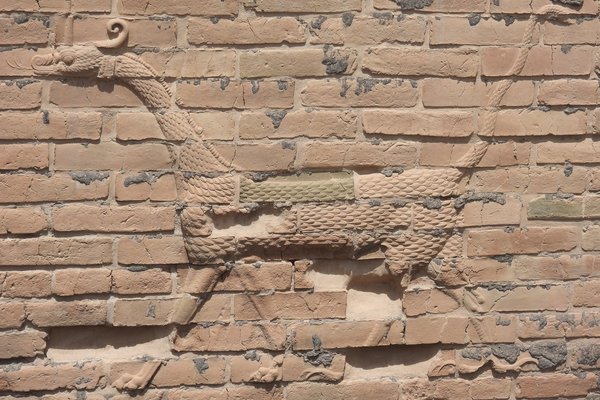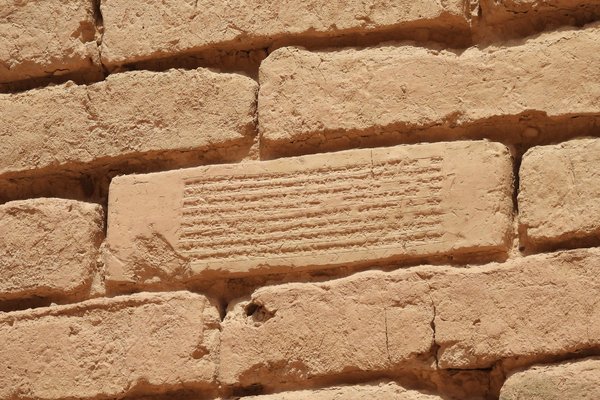Iraq
Babylon
Babylon is the archaeological site of what once was one of the largest and oldest urban settlements in Mesopotamia.
It comprises the – largely unexcavated - remains of the ancient Neo-Babylonian capital, its city walls and temples. Particularly during the reign of Nebuchadnezzar II (604–561 BCE), monumental buildings such as the Etemenanki ziggurat and the Ishtar Gate were added. Babylon also had a lasting impact on global culture because of its 'exotic' Hanging Gardens and the Tower of Babel.
Community Perspective: Wojciech visited in 2021 and left with mixed feelings. Els did so in 2025 and also regretted the unfulfilled potential of the site.
Site Info
Official Information
- Full Name
- Babylon (ID: 278)
- Country
- Iraq
- Status
-
Inscribed 2019
Site history
History of Babylon
- 2019: Inscribed
- Inscribed
- 2016: Incomplete - not examined
- 1983: Deferred
- Deferred as conditions under which recommendation made not yet fulfilled
- Type
- Cultural
- Criteria
- iii
- vi
Links
- UNESCO
- whc.unesco.org
All Links
UNESCO.org
- whc.unesco.org — whc.unesco.org/
News Article
- Feb. 14, 2021 bdnews24.com — In beleaguered Babylon, doing battle against time, water and modern civilisation
Community Information
- Community Category
- Archaeological site: Near Eastern
Travel Information
Red Zone Travel Advisory
Recent Connections
-
Red Zone Travel Advisory
All of Iraq except Kurdistan -
Tigris - Euphrates Basin
Euphrates -
Akkadian Empire
"Babylon’s cultural legacy was enhanced…
Connections of Babylon
- Individual People
-
-
Alexander the Great
According to a Babylonian astronomical diary, Alexander died between the evening of June 10 and the evening of June 11, 323 BC, at the age of thirty-two. This happened in the palace of Nebuchadnezzar II in Babylon. (wiki)See en.wikipedia.org
-
Gertrude Bell
In January 1909, Bell left for Mesopotamia. She visited the Hittite city of Carchemish, mapped and described the ruin of Ukhaidir, and continued to Babylon ... (wiki)
-
- Geography
-
-
Tigris - Euphrates Basin
Euphrates
-
- Trivia
-
-
Replica in Legoland
Ishtar Gate in Legoland Dubai -
Modern Board Games
7 Wonders (2010) and expansions -
In the British museum
Babylonian Map of the WorldSee en.wikipedia.org
-
In the Pergamon museum
Ishtar Gate -
Underground Boundaries
• " In response, the State Party submitted a new, three-dimensional boundary concept on 25 February 2019. In this revised delimitation, the outer boundaries remain identical while a number of 20th century constructions have been excluded above-ground – thereby becoming islands of buffer zone within the property – while potential or known archaeological resources below these remain explicitly within the property. Excluded are numerous areas including the three artificial hills with Saddam Hussein’s palace located on the westernmost side, the contemporary village housing located within the property, individual government buildings such as the police headquarters and conference centre, as well as manifold others..." (Advisory Body Evaluation, 2019) -
In Video Games
Civilization VI: Etemenanki; Civilization VII: Hanging Gardens -
Former Largest Cities
It has been estimated that Babylon was the largest city in the world c. 1770 – c. 1670 BC, and again c. 612 – c. 320 BC (wiki) -
In the Istanbul museum
The Istanbul Archaeology Museum has lions, dragons, and bulls from the Processional Way to the Ishtar Gate (wiki)
-
- History
-
-
Babylonian Empire
The capital of the Neo-Babylonian Empire (626-539 BCE) (OUV crit 3) -
Mesopotamia
Babylon was a key kingdom in ancient Mesopotamia from the 18th to 6th centuries BC. (wiki) -
Located in a Former Capital
Babylon was the capital of the Neo-Babylonian EmpireSee en.wikipedia.org
-
Excavated by the Deutsche Orient-Gesellschaft
DOG undertook excavations in Babylon from 1899 to 1917, directed by Robert Koldewey, uncovering the Ishtar Gate, the palaces of Nebuchadnezzar, and the Hanging Gardens of Babylon. Koldewey also claimed to have discovered the Tower of Babel. (wiki) -
Achaemenid Empire
Under Cyrus and the subsequent Persian king Darius I, Babylon became the capital city of the 9th Satrapy, as well as a centre of learning and scientific advancement. In Achaemenid Persia, the ancient Babylonian arts of astronomy and mathematics were revitalized, and Babylonian scholars completed maps of constellations. The city became the administrative capital of the Persian Empire and remained prominent for over two centuries.See en.wikipedia.org
-
Amarna Letters
Karduniaš, ... is a Kassite term used for the kingdom centered on Babylonia and founded by the Kassite dynasty. It is used in the 1350-1335 BC Amarna letters correspondence. (wiki)See en.wikipedia.org
-
Specified on Herodotus' Oikumene
-
Akkadian Empire
"Babylon’s cultural legacy was enhanced by previous Akkadian and Sumerian cultural achievements, which included the cuneiform writing system" (OUV crit iii)
-
- Architecture
-
-
Brick architecture
"Prior to the heavy use of baked bricks in the reign of Neo-Babylonian ruler Nebuchadnezzar II (605–562 BC), construction at Babylon was primarily of unbaked brick" (wiki)See en.wikipedia.org
-
- Damaged
-
-
Destroyed during invasion
Babylon was severely damaged during the 2003 invasion of Iraq and the occupation by military units of the Coalition Forces: "The use of Babylon as a military base was a grave encroachment on this internationally known archeological site".See web.archive.org
-
- World Heritage Process
-
-
Reconstruction regarded as unsatisfactory
"ICOMOS considers that the number of reconstructions is unusually high and that some of these were almost complete reconstructions based on very scanty archaeological evidence. The height and design of these reconstructions is thus based on conjecture rather than scientific or archaeological evidence." (AB ev) -
Ten years or more to inscribe
1983-2019
-
- Religion and Belief
-
-
Mentioned in the Bible
Various places, including Genesis 10:10 "The beginning of his kingdom was Babel, Erech, and Accad, all of them in the land of Shinar." -
Goddesses
Ishtar Gate: dedicated to the Babylonian goddess Ishtar
-
- Constructions
-
-
Ziggurat
Etemenanki ziggurat (now in ruins)See en.wikipedia.org
-
Tell
The remains of the city are in present-day Hillah, Babil Governorate, Iraq, about 85 kilometres (53 mi) south of Baghdad, comprising a large tell of broken mud-brick buildings and debris. wiki) -
Theatres and Opera Houses
Hellenistic Theatre -
Gates depicting Lions
Ishtar Gate
-
- WHS on Other Lists
-
-
U.S. Ambassadors Fund
2 million USD grant in 2010 -
Seven Wonders of the World
Hanging Gardens of Babylon. It is unclear whether they ever existed, or whether they were located in Babylon or Nineveh. Some early Wonder lists named the ‘Walls of Babylon’ instead. Its wondrous elements (Gardens, Tower) are part of the OUV of the WHS of Babylon (Crit vi: "Classical texts attribute one of the seven wonders of the world to Babylon: the Hanging Gardens") -
Part of Our Top 50 Missing
As "The Sacred Complex of Babylon" (no. 32) -
World Monuments Watch (past)
As part of 'Cultural Heritage Sites of Iraq'(2006, 2008)See www.wmf.org
-
- Timeline
-
-
Built in the 7th century BC
"The key period of Babylon, however, began in 626 BCE, when Nabopolassar rose to power (626–605 BCE) and especially under his successor, Nebuchadnezzar II (604-562 BCE), who created a vast empire, making Babylon a significant capital." (AB ev)
-
- Science and Technology
-
-
Excavated by Centro Scavi Torino
-
Astronomy and Astrology
"it also left a considerable scientific legacy in the fields of mathematics and astronomy" (OUV)See en.wikipedia.org
-
Archaeological potential
the large majority of the property remains unexcavated and retains a significant potential to provide knowledge based on the yet unaltered and unexcavated remains (AB ev)
-
- Visiting conditions
-
-
Red Zone Travel Advisory
All of Iraq except Kurdistan
-
- Literature & Film
-
-
Location for a classic movie
Intolerance (1916, preserved at the United States National Film Registry) -
Marvel Cinematic Universe
Eternals (2021): Ishtar Gate, Hanging Gardens of Babylon
-
News
- bdnews24.com 02/14/2021
- In beleaguered Babylon, doing batt…
Recent Visitors
Visitors of Babylon
- AC
- Afshin Iranpour
- Alexander Barabanov
- Alexander Lehmann
- ALKAREEMNASSER
- A. Mehmet Haksever
- Artur Anuszewski
- Christravelblog
- Clyde
- Els Slots
- Eva Kisgyorgy
- Fan Yibo
- Gernot
- Harry Mitsidis
- henryjiao18
- Janos
- Loic Pedras
- Luis Filipe Gaspar
- Maciej Gil
- marcel staron
- Marcobrey
- Martin
- michaelsballard
- Philipp Leu
- Rahelka
- Roman Bruehwiler
- Ryan Gentry
- Szucs Tamas
- Thomas Buechler
- Timothy C Easton
- Vsacan
- Wojciech Fedoruk
- Zoë Sheng
Community Reviews
Show full reviews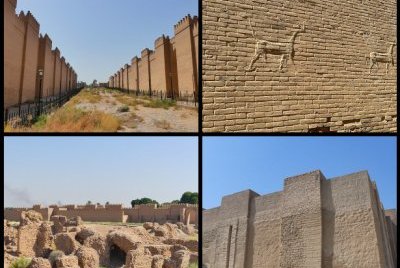
I visited this WHS in September 2024. Most of this WHS has not been excavated yet, and judging by most of the lame reconstructions above ground and by the iconic artefacts (above all perhaps, the amazing glazed tiles of the Ishtar Gate and the Babylonian Map of the World clay tablet) which can be found in the National Museum of Baghdad and in the Pergamon Museum in Berlin, this is definitely a good thing. The Euphrates river has long vanished from this site and problems of water drainage and rising groundwater levels among the original and/or reconstructed mud brick structures are still a huge headache.
Luckily, the World Monument Fund is now being used quite well to restore the mud brick Ninmakh Temple as well as some of the main elements close to the processional street although a lot more work is needed to strike a better balance between restoration of reconstructions and excavation. If you keep your eyes peeled for some detail among the reconstructions, you'll be able to spot a few original bricks with cuneiform writing among the bricks with Saddam Hussein's name, a few original tiles of the processional street, some original dried mudbricks cemented with bitumen, and much easier to spot, the Lion of Babylon statue. I'm very glad I visited Babylon, but it is one of those important ancient city WHS like Nineveh, Troy, Carthage, etc. where it is very difficult to grasp their OUV from what's left in situ, and much easier to …
Keep reading 0 comments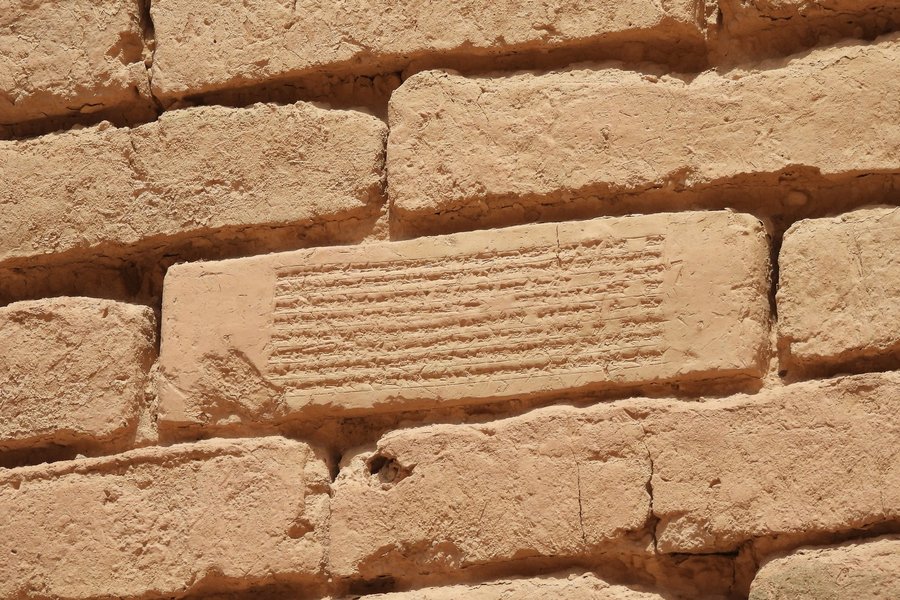
I made it to Babylon in April 2025. There’s a lot to explain here – we’re missing a Solivagant-style PhD review, so I have tried my best to cover a few subjects to better be able to understand this WHS. I based myself on the official nomination documents, web searches, and the wonderful book “Mesopotamia, Ancient Art and Architecture”.
First, the Babylonian Empire itself. We had a connection here already. I’ve redone it to distinguish between the “Old” or “First” Babylonian Empire and the Neo-Babylonian Empire. Remains of the first (2nd millennium BCE) are hardly existent at the Babylon WHS. It focuses on the Neo-Babylonian empire, about 1,000 years younger and a relatively late stage in the history of Mesopotamia overall (it is Chapter 12 of 14 in the aforementioned, chronologically ordered book). The King of Babylon (most notably Nebuchadnezzar II) regained regional power and started a monumental building scheme that centered on his capital, Babylon and included the famous Ishtar Gate. This Babylon is also what is referred to multiple times in the Bible (often allegorically and not in a positive way).
Second, the site’s integrity and authenticity. It is estimated that only 18% of the archaeological remains of Babylon have been excavated. Still, you will see a lot of semi-complete buildings at the site. This is the result of the “Revival of Babylon Project” that ran in the 1980s. Saddam Hussain saw himself as a modern Nebuchadnezzar (this was during the Iran-Iraq war) and …
Keep reading 0 comments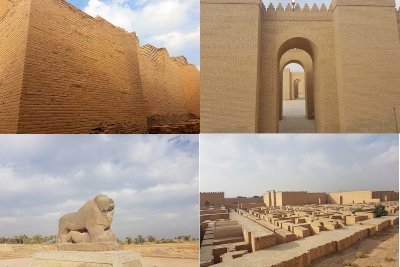
Babylon is the ruin of the capital of the kingdom of Babylon, a country that had enjoyed its heyday since the time of Hammurabi (18th century B.C.E.). The golden age of the development of the city of Babylon fell during the time of King Nebuchadnezzar II, who ruled from 605 to 562 B.C.E. and significantly expanded Babylon, including building the magnificent Southern Palace.
After paying 25 thousand dinars I got a guide who showed me around the complex. The guide was incredibly nice, but his English was rather poor and he had a hard time explaining the historical or architectural complexities. Despite everything, he tried and told a lot, and what I heard was not necessarily pleasant to Polish ears. He worked here during the occupation of these areas by the allied forces (do you remember "Camp Babylon"?) and he cannot say anything good about this occupation. According to him, soldiers did not respect the monuments, treated them carelessly, and even deliberately devastated or took some artifacts - unfortunately, independent sources confirm what he said. On the other hand, he spoke positively about the Polish soldiers who gave him food and healed his seriously ill daughter at a time when it was extremely difficult to find a normal doctor. Apart from the purposefulness of the war itself, I do not understand why the main military camp of the occupiers had to be located next to a place of such great historical importance. Fortunately, Camp Babylon lasted "only" less than …
Keep reading 0 comments
